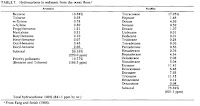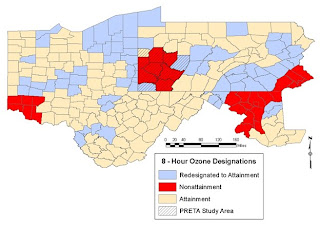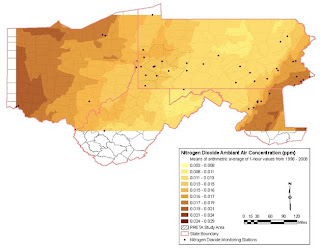Water Contamination Studies
By Samantha Malone, MPH, CPH – CHEC Communications Specialist and BCHS Doctoral Student, University of Pittsburgh, Graduate School of Public Health
Water Contamination Potential
When the ‘new’ methods for gas extraction first appeared on the horizon in Pennsylvania, many citizens expressed concern that their water could become contaminated by the hydraulic fracturing process used to obtain natural gas from the Marcellus Shale. At the same time, the natural gas industry’s PR group, the Marcellus Shale coalition, claimed that “hydrofracking has [a] safe record and spurs [the] economy.” Preliminary research conducted by the Agency for Toxic Substances and Disease Registry (ATSDR) and the U.S. EPA in Pavillion, Wyoming suggest that a portion of citizens’ concerns might be warranted. (To learn more, read the PDFs numbered 2, 3, and 4 at the end of this post.)
Some researchers believe that gas extraction cannot be done without negatively impacting water quality due to the likelihood of well casings leaking over time (Dusseault, 2000). See excerpt below:
The consequences of cement shrinkage are non-trivial: in North America, there are literally tens of thousands of abandoned, inactive, or active oil and gas wells, including gas storage wells, that currently leak gas to surface. Much of this enters the atmosphere directly, contributing slightly to greenhouse effects. Some of the gas enters shallow aquifers, where traces of sulfurous compounds can render the water nonpotable, or where the methane itself can generate unpleasant effects such as gas locking of household wells, or gas entering household systems to come out when taps are turned on. Methane from leaking wells is widely known in aquifers in Peace River and Lloydminster areas (Alberta), where there are anecdotes of the gas in kitchen tap water being ignited. Because of the nature of the mechanism, the problem is unlikely to attenuate, and the concentration of the gases in the shallow aquifers will increase with time. (Dusseault, 2000)
Updating PA’s 1989 Cement Regulations
In an attempt to reduce the risk that the increased drilling in PA would negatively impact groundwater and drinking water supplies, the PA Environmental Quality Board published its proposed rulemaking measures to update existing state requirements for many of the processes involved in natural gas drilling, including: casing and cementing the well, monitoring and inspections, and plugging of oil and gas wells. (A significant portion of the existing regulations in PA that dictate water supply replacement and how gas wells are constructed were created in 1989.)
Whether natural gas drilling – when done properly – can contaminate well water or the acquifer from which well water is obtained is a significant research question. Public health would suggest that this is an imperative issue considering the number of violations sited against companies drilling in Pennsylvania by the PA DEP. (See map below that shows Marcellus Shale wells drilled since 2007 and violations as of September 22, 2010. To view an individual record, click the “i” in the toolbar below the map and then click on the record about which you would like to obtain more information.)
[image removed]
The potential impacts that the natural gas industry could have on water quality and public health are some of the major reasons that the U.S. EPA is conducting a $1.9 million study on hydraulic fracturing, including a life-cycle analysis of the process. In order to better understand the relationship between drilling products and water resources, the EPA recently sent a letter to select hydraulic fracturing service providers that requests they release the constituents of their fracturing fluid, as well as specific information about other industry processes.
References and Additional Publications
- Dusseault MB. 2000. Why Oilwells Leak: Cement Behavior and Long-Term Consequences. Society of Petroleum Engineers Inc.
- ATSDR Health Consultation, Pavillion, WY – Evaluation of Contaminants in Private Residential Well Water
- EPA, Pavillion, WY – Expanded Site Evaluation – Analytical Results Report
- EPA, Pavillion, WY – Conceptual Site Model








